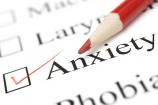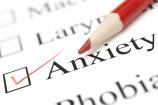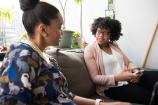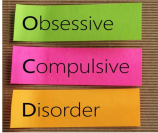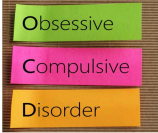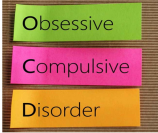Videos and Podcasts
ADAA member Elizabeth McIngvale, PhD, LCSW talks about her personal experience with living with OCD. When you are in the middle of a battle or a big trigger, it can seem hopeless but your OCD does not define you and OCD treatment makes that possible for all of us.
Presented in…
PTSD is an illness that people may develop months after experiencing or witnessing a life-threatening event, including a terrorist attack like 9/11; combat; earthquake, tsunami, hurricane, tornado, or other natural disaster; serious auto or plane accidents; personal assault or abuse; or the…
I have always suffered with Generalized Anxiety Disorder, but really hit rock bottom about 5 years ago after my hysterectomy. About 18 years ago after the birth of my first child I suffered some complications. To this day, I can replay every moment - this is when the doctors diagnosed me…
Happy Mental Health Awareness Month! My name is Antonio Liranzo, I am an actor and author. I believe that breaking the stigma is so important and it is ok to not be ok.
In the past year, I have been on my own journey with my anxiety...
Four evidence-based videos featuring ADAA member Melanie Van Dyke, PhD explaining: Evidence-based Therapy for Adolescent Depression - Cognitive Behavioral Therapy - Selecting a CBT Therapist - How to Know if Therapy is Working
This helpful video discusses what a research study is and how you can get involved. The video was produced by ResearchMatch.org.
ResearchMatch brings together people who are trying to find research studies and clinical trials, and researchers who are looking for volunteers. Research is a…
What’s the difference between stress and anxiety? Stress can come from any situation or thought that makes you feel frustrated, angry, nervous, worried, or even anxious. Anxiety is a reaction to the stress, a feeling of apprehension or fear.
//Discover when you should become concerned that you might have an anxiety disorder.
//Learn about changes you can make to your lifestyle to reduce stress and anxiety.
//Psychologist Dr. Douglas Mennin discusses how to understand anxiety disorders.
The typical age of onset is 13 years old, but children younger than 8 or 9 can also suffer. Symptoms may be so extreme that they disrupt daily life. Children, adolescents, and teens with this disorder may have few or no friends. They may not participate in class or play at recess.
//…Dr. Elspeth Bell, a licensed psychologist at the Behavior Therapy Center of Greater Washington, speaks on behalf of the Anxiety and Depression Association of America. She describes the mental illness OCD, which stands for obsessive-compulsive disorder. OCD is a serious and often debilitating…
Adults with social anxiety disorder often feel alone and ashamed, and they may have few or no social or romantic relationships. People may have more than one anxiety disorder, as well as depression. Seek the help of a qualified health professional if you feel your anxieties are disrupting your…
A health professional can provide a diagnosis and individualized treatment plan for social anxiety disorder. Both cognitive-behavioral therapy (CBT) and medication are scientifically proven effective treatments. Your therapist should be able to discuss how long it will take for you to begin to…
Those with social anxiety disorder experience an intense fear of being scrutinized and negatively evaluated by others in social or performance situations. Some literally feel sick. Physical symptoms commonly include blushing, profuse sweating, trembling, nausea or other gastrointestinal distress…
Social anxiety disorder affects more than 15 million Americans of all ages, races, and cultures, and it may be present in children as well as adults. This disorder is an intense fear of being negatively judged by others.
//Research is ongoing to learn more about OCD and to develop new types of treatment, such as deep brain stimulation for treatment-resistant OCD and high-intensity radiation for people with severe OCD symptoms.
Funding for this video provided by a grant from the American College of…
The two types of treatment for OCD are cognitive-behavioral therapy, or CBT, and medication. For some people, a combination may be the most effective treatment. Exposure and response prevention, or ERP, is often the most effective form of CBT.
Funding for this video provided by a grant…
The essential features of adult OCD are recurrent, unwanted obsessions or compulsions that are severe enough to be time consuming; that is, they take more than one hour a day — or they cause marked distress or significant impairment in your daily life.
Funding for this video provided by…
Most children with OCD are diagnosed around age 10, although the disorder can strike children as young as 2 or 3. Boys are more likely to develop OCD before puberty, while girls tend to develop it during adolescence. Unlike adults, children do not always realize that their obsessions and…







